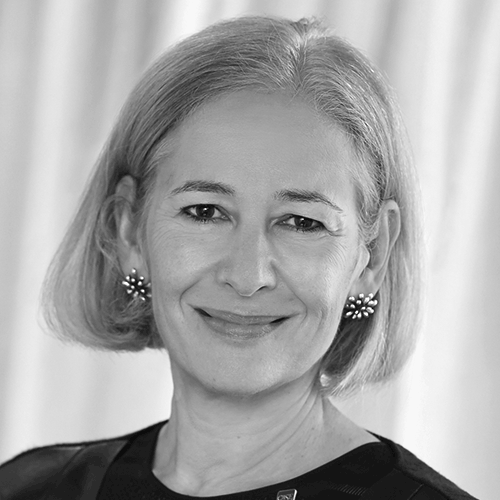
Sue Cunningham
President and CEO, Council for the Advancement and Support of Education (CASE)
In the world of educational institutions, it’s an exciting time to be an advancement professional — someone who works in alumni relations, advancement services, communications, fundraising, and marketing.
Advancement professionals have the pleasure and responsibility of working at the critical intersections between their institutions and the communities they serve. They engage alumni and supporters in the life of their institutions. They communicate the life-changing stories their schools deliver, including profound research advances, personal student transformations, and powerful community service.
Advancement professionals ensure people know, value, and support this important work. They also work closely with people who want to give their time and financial support to help these schools, colleges, and universities succeed.
Fruits of their labor
Charitable giving reached record levels in 2018. According to the Council for Advancement and Support of Education’s annual Voluntary Support for Education survey, people gave nearly $47 billion in charitable gifts to education in the United States.
But where does this money go and how does it help?
First, let’s talk about why people give. People give to education because they believe it transforms lives. People give when they feel passionate about working with others to make a difference, and they are inspired by dedicated and visionary institutions. They invest their own resources in institutions where they have connections with people they respect, know, and trust to ensure their gift achieves its purpose.
Second, let’s look at how people give. Voluntary contributions come in two basic categories: capital purpose and current operations. Both methods provide vital resources to educational institutions.
Where the gifts go
Capital purpose gifts are often for endowments, which are permanent funds from charitable gifts that offer schools, colleges, and universities the enduring stability to empower generations of students and shape our world’s future. When we look at endowment contributions, the leading use of these gifts (37 percent) is funding student financial aid. These contributions enable the institution to provide scholarships of many different kinds for deserving students in programs across the institution over many years. An institution’s “endowment” is a collection of hundreds to thousands of funds set up to support those programs and purposes. This type of giving helps institutions provide financial stability and certainty over time. Capital gifts can also fund things like buildings and equipment (think research facilities, laboratories, and the like).
Current operations gifts are designed for use that year to fund student scholarships, faculty research, and other types of direct and immediate support for the institution. Of the nearly $47 billion given to educational institutions in the United States last year, $27.4 billion of that was given for current purposes: direct support for academic divisions, such as the work of teaching, research, and scholarship in academic units; research, where giving advances specific research projects and activities; and student financial aid, providing vital scholarships and other forms of aid.
The goal of giving
Overall, giving helps schools, colleges, and universities achieve their missions. It provides resources to fund more than 10 percent of institutional expenditures each year, and this percentage is even higher for private colleges and universities. These funds are necessary for providing profound benefit to us all.
Advancement professions play a major role in sustaining the vitality of educational institutions worldwide, and CASE is proud of the many roles we play in strengthening the profession. From internships for current undergraduates, to graduate residency programs, to our management institutes and other programs for advancement leaders, a spectrum of opportunities awaits professionals in all disciplines at all levels.
While there are incidents of controversy in regard to philanthropy, it’s crucial to understand that the vast majority of those who give to colleges and universities do so because they believe in the institution’s mission and want to make a difference in advancing education. They give because they know and trust that those institutions change lives.
As we enter the season of giving, remember that we all benefit from the tradition of generosity that exists in this country and around the world.

